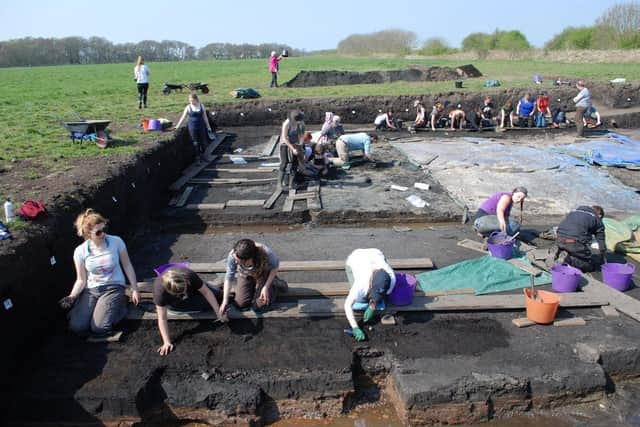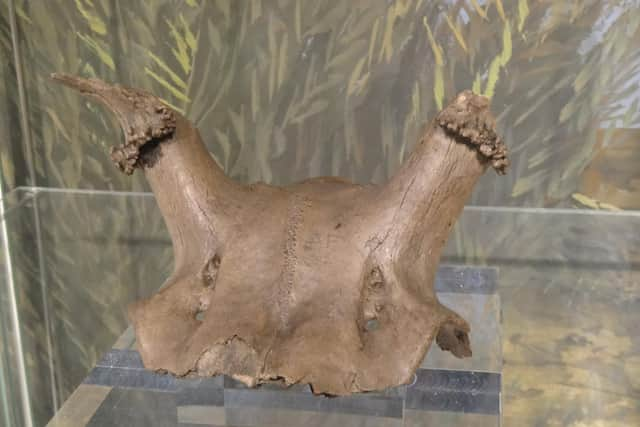Scarborough: Archaeological finds giving insight into life of hunter gatherers to go on display at Yorkshire museum
They will now go on display at the Yorkshire Museum, as part of an interactive exhibition exploring how they deepen our understanding of the way people lived 11,000 years ago, at the end of the last ice age.
“Star Carr: Life after the ice” will showcase a range of finds made at the site in North Yorkshire which offer insights into how prehistoric communities settled, created, cooked, worshipped and adapted to the landscape they lived in.
Advertisement
Hide AdAdvertisement
Hide AdThe excavations were part funded by the University of York through the Department for Science, Innovation and Technology (DSIT) Regional Innovation funding.


Star Carr, a site of international archaeological importance, is sometimes referred to as the ‘Stonehenge of the Mesolithic’.
Buried beneath layers of peat, which has been credited as the reason why the finds were preserved so well, the site also had evidence of the earliest houses, a place where hunter-gatherers settled and lived by what was once a large lake in a settlement which existed at a time when Britain was still connected to Europe.
Professor Nicky Milner, the head of the Department of Archaeology at the University of York co-directed the excavation at Star Carr in the award-winning project.
Advertisement
Hide AdAdvertisement
Hide AdShe said: “It is very exciting to have these internationally important artefacts go on display, some for the first time. They are incredibly rare and I’m sure people will be fascinated to see such old objects which give us a glimpse into what life was like 11,000 years ago.”


It is said that the display of artefacts will shed light on a world in which people were deeply connected to the natural environment in the face of extreme climate change after the first Ice Age.
There was considerable evidence for antler and bone working into tools and particularly barbed points (perhaps used as spears for killing animals, fish etc).
193 have been found on the site, which accounts for roughly 97 per cent ever found in the UK.
Advertisement
Hide AdAdvertisement
Hide AdThrough creative design and sensory space-making, visitors will be immersed in the Mesolithic world of Star Carr through an interactive mural and soundscape. Children will also be able to follow the story of Star Carr through the eyes of a friendly dog who lived with the people by the lake.
A wider programme of events including specialist lectures will run alongside the exhibition, which opens on March 22, with family-friendly events including weaving workshops, headdress-making and pendant-making scheduled for the Easter and summer school holidays.
Adam Parker, Curator of Archaeology at the Yorkshire Museum, said: “The Star Carr collection holds some of the most rare and special objects from Mesolithic Britain and this exhibition will form the finest and most diverse display of Mesolithic items in the country.
“We are delighted to be working in partnership with the University of York on this project and to have the expertise of their researchers to help us to bring the settlement of Star Carr to life for visitors of all ages.
Advertisement
Hide AdAdvertisement
Hide Ad“We are excited to be displaying many of the artefacts for the very first time and hope the exhibition will challenge our thinking about how the people of the Mesolithic era lived. They were sophisticated with complex sets of beliefs and living in an area which was very different to North Yorkshire’s landscape of today.”
Starr Carr, near Scarborough, has become world famous in archaeological terms due to the quality of finds.
John Moore, a local amateur archaeologist who found 10 sites in the area from 1947, found Starr Carr and, after finding flint, bone and antler, contact was made with Grahame Clark, lecturer of Prehistory at the University of Cambridge.
From 1949-1951 Clark excavated Star Carr and published his findings in 1954.
Advertisement
Hide AdAdvertisement
Hide AdIt wasn’t until the 1980s that further research was carried out to investigate the palaeoenvironment and in 1985 a trench was excavated about 30 metres to the east of the original excavations by Clark.
New excavations started in the 2000s under the direction of Professor Milner.
The Yorkshire Museum in York was opened in 1830, and has five permanent collections, covering biology, geology, archaeology, numismatics and astronomy.
'The Country Post newsletter - bringing you all the latest on rural life and farming across Yorkshire. Sign up today www.yorkshirepost.co.uk/newsletter
Comment Guidelines
National World encourages reader discussion on our stories. User feedback, insights and back-and-forth exchanges add a rich layer of context to reporting. Please review our Community Guidelines before commenting.
